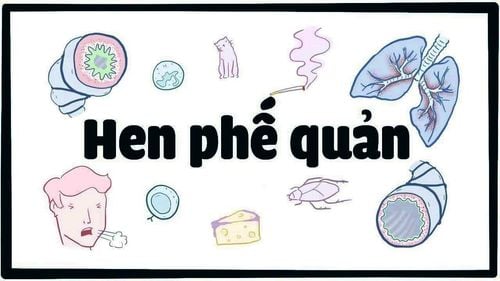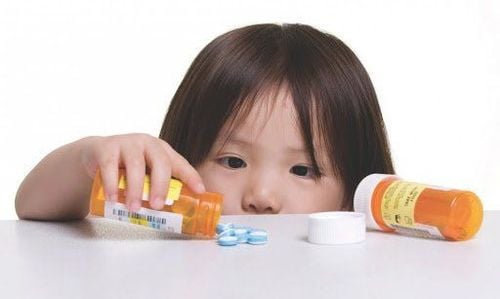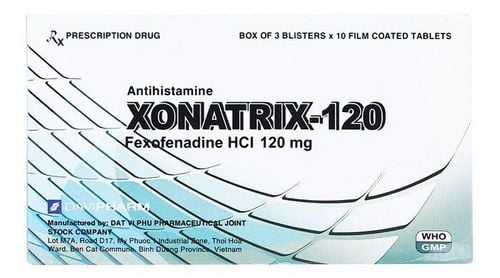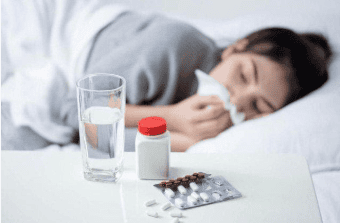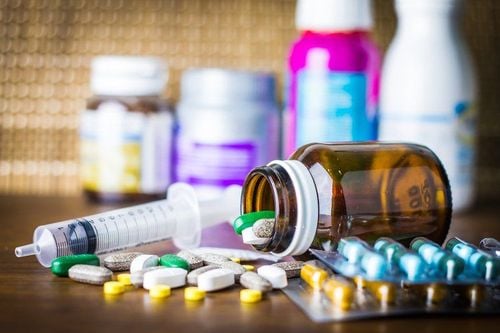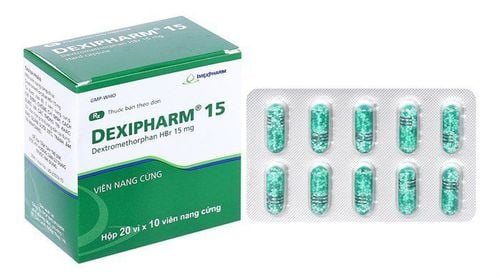This is an automatically translated article.
The article was professionally consulted by Dr. Le Thu Phuong - Department of Pediatrics - Neonatology - Vinmec Hai Phong International General Hospital.During the first year of life, most young children can catch up to seven colds, and the incidence is higher during daycare. Treatment of colds in young children is largely about alleviating symptoms, such as treating a baby's cough and runny nose. However, young children need to be seen by a doctor if there are signs of a cold to make sure it is not pneumonia or other serious illness.
1. The basic symptoms of a cold
The first signs of the common cold in babies are usually:A stuffy or runny nose. The nasal discharge may be clear at first but may thicken and turn yellow or green. Other signs and symptoms of a cold in your baby may include:
Fever. Sneezing. Prolonged cough. Anorexia. Irritability. Difficulty sleeping. Difficulty eating or drinking due to stuffy nose or cough.
Trắc nghiệm: Nhận biết sớm dấu hiệu chậm phát triển thể chất và trí tuệ ở trẻ
Nếu 6 tuổi không biết đếm số, 7 tuổi vẫn chưa phân biệt được giữa thực tế và tưởng tượng thì có thể bé chậm phát triển thể chất và trí tuệ hơn so với bạn bè cùng lứa. Bạn đã nhận biết được các dấu hiệu bất thường sớm này chưa? Cùng làm nhanh bài trắc nghiệm sau để trang bị thêm kiến thức cho mình nhé!
The following content is prepared under supervision of Thạc sĩ, Bác sĩ y khoa, Ma Văn Thấm , Nhi , Phòng khám Đa khoa Quốc tế Vinmec Dương Đông(Phú Quốc)
2. When to see a doctor?
Your baby's immune system will take time to mature. If your baby has a cold that doesn't progress and the symptoms subside, it should go away within 7 days.If your baby is less than 3 months old, call the doctor early if the illness does not improve as this may not be a cold but a more serious illness, especially if the baby has a fever.
Most colds do not cause too much trouble but it is important for parents to monitor their children to detect early signs of seriousness to take them to a medical facility. If your baby is 3 months old or older, get medical attention early if:
The number of diaper changes is less than usual. Have a temperature higher than 38 degrees Celsius. Have symptoms of ear pain or unusual discomfort. Red eyes or yellow or green eye discharge. Shortness of breath. Persistent cough. Have a thick, green nasal discharge for several days. There are other signs or symptoms that worry you, such as unusual crying or crying that won't stop. In addition, if the child has the following signs, parents need to take the child to the hospital immediately:
Do not eat or drink anything. Cough so much that it causes vomiting or changes in skin color. Coughing up bloody sputum. Shortness of breath or cyanosis around the lips or fingertips.
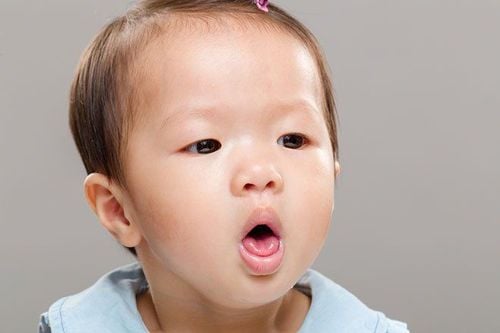
3. Causes of colds in children
A cold is an infection of the nose and throat (upper respiratory tract infection) that can be caused by one of more than 100 viruses, and the most common is Rhinovirus.Once infected with a virus, your baby usually becomes immune to the virus, but because so many viruses cause colds, your baby can catch colds many times throughout his life. In addition, some viruses do not confer lasting immunity.
A cold virus enters a baby's mouth, nose or eyes by:
Air . When another sick person coughs, sneezes or talks, that person can directly transmit the virus to the child. Contact directly . A person with a cold touching a baby's hand can pass the cold virus on to the baby and then the baby touches his or her eyes, nose, or mouth. Contaminated surface. Some viruses live on surfaces for two hours or longer. Your baby can get the virus by touching a contaminated surface, such as a toy.
4. Risk factors for colds
Some factors put children at high risk of catching a cold such as:Immune system is not yet mature . Young children are, by nature, at risk of catching a cold because they have never been exposed and therefore have no resistance to most viruses present in the environment. Contact with other children. Young children spend a lot of time with other children at daycare who don't always wash their hands or cover their coughs and sneezes, which increases their risk of catching a cold. Time of year . Both children and adults are susceptible to colds from fall to late spring.
5. Complications of a cold
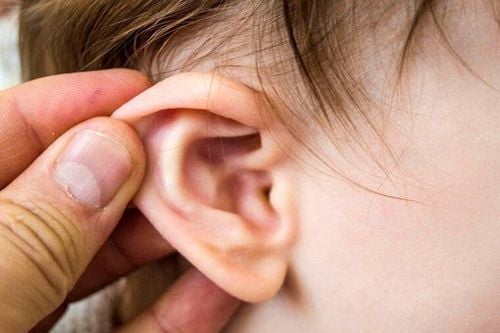
Wheezing: A cold can cause wheezing, even if your child doesn't have asthma. If your child has asthma, a cold can make it worse.
Sinusitis : A cold that is not completely resolved can lead to a secondary infection in the sinuses that causes sinusitis.
Other secondary infections: including pneumonia, bronchitis and spasms.
6. Note when treating cough and runny nose for children when they have a cold
This is a viral disease, so there is no specific treatment, only treating symptoms, improving physical strength and resistance, and waiting for the disease to heal on its own. Complications should be treated if unfortunately there are complications. Because antibiotics do not work against cold viruses, parents should not arbitrarily give antibiotics to children. Try to make your baby more comfortable with measures such as sucking out nasal mucus and keeping the air moist. Over-the-counter (OTC) medications should generally be avoided in young children, but fever-reducing medications can be used, but the directions for use must be followed carefully.Fever reducers Fever is part of your child's natural response to the virus with a mild fever. OTC pain relievers such as acetaminophen or ibuprofen can relieve fever-related discomfort, however, these drugs do not kill the virus that causes colds.
Do not give acetaminophen to children under 3 months of age and be careful when giving acetaminophen to older children because the dose will vary with weight, so parents can be confused, if parents are not sure about the dose. The amount is right for your child, please consult your doctor before giving it to your baby.
Do not give medicine to the child if the child is dehydrated or vomiting continuously.
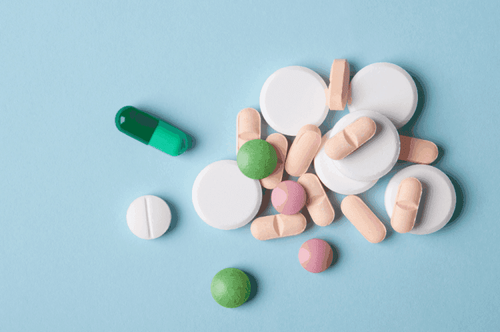
In June 2008, manufacturers removed cough and cold medicines for young children from the market. They also revised the product labels on the rest of the OTC cough and cold medicines to warn people not to use them in children younger than 4 years old because of safety concerns.
Provide plenty of fluids. Fluids are important to prevent your child from becoming dehydrated with a fever. Therefore, parents can encourage the baby to drink and if the baby is still breastfeeding, the mother should continue to breastfeed because breast milk is a very good source of antibodies to protect the baby from cold germs.
Cleaning the nose: Using a suction bulb: This method is suitable for babies and young children. Place the child on his or her back, doing each side in turn. Put 2 - 6 drops of physiological saline into one nostril, wait a moment. Deflate the balloon to expel the air and then gently insert the suction tip of the balloon into the child's nose. Release your hand so that the mucus and nose are aspirated into the balloon. Squeeze the air and fluid in the balloon into the toilet paper. Repeat until the nose is clear (only clear water). It is necessary to clean tools and hands of the operator before and after cleaning the child's nose. Each day can be done 2-3 times or more depending on the condition of the child's nasal secretions. Using a nasal aspirator: This method is similar to using a suction bulb, except that adults use their mouth to suck the child's nose through a one-way wire system. Absolutely do not blow air into the wire when cleaning the nose, it will cause bacteria to go back into the child's nose. Use a nebulizer bottle: First of all, it is necessary to remove the nasal mucus for the child. If the child is older, have them blow their nose. Young children use clean, smooth tissue paper, roll it into a deep wick, and gently put it into the child's nose to absorb water and pull out a little mucus. Then spray 1-2 sprays on each side, paying attention to the tip of the spray bottle towards the outside of the cheek. You should choose a spray bottle with a gentle beam force for children to be less afraid and less sore. Do 4-6 times a day, depending on the state of nasal mucus secretion. Nasal irrigation pump: A way to wash the nose that pumps water into one side and then it flows out the other. This is the most controversial method of causing otitis media. So should I do this method? It is possible if the parents are shown the right way and the child cooperates or at least does not resist. Because most children do not like this way of cleaning their nose, so they often cry and kick very hard. As such, this method should not be used for children, because the mucus in the nose has not been removed, but it has scared them, which is also a kind of psychological trauma. Only babies in the first few months or those who are made at a young age and are used to it will accept this method. And also should only use nasal irrigation when the above methods are not effective, the child still has a lot of stuffy nose due to a lot of deep mucus. Humidify the air. Running a cool water humidifier in your baby's room can relieve a stuffy nose. Change the water daily and follow the manufacturer's instructions for cleaning the device. Note in treating cough and runny nose for children is not to arbitrarily give the baby medicine without the permission of the doctor. This can make the child's condition worse. In case the child has a cough that does not go away for a long time, it is necessary to take the child to a reputable medical facility for examination. Vinmec International General Hospital, with a team of leading pediatric doctors and modern equipment, is an address that many parents trust in the treatment of children's diseases, such as cough with phlegm, cough with wheezing. wheezing, high fever, pneumonia,...
In addition, parents should also add some supportive foods containing lysine ingredients, essential micro-minerals and vitamins such as zinc, chromium, selenium, vitamins of group B, ... help meet the needs of nutrients and at the same time support the immune system, enhance resistance, reduce the risk of upper respiratory tract infections, bronchitis, colds and flu , runny nose,... Lysine is very necessary for the development of children, Lysine promotes the production of digestive enzymes to stimulate children to eat better and digest easily and effectively, increase food metabolism, maximum absorption of nutrients from food. Boosting Lysine for babies helps the body create antibodies, develop resistance to help reduce cough and thin sputum in children.
Parents can learn more: Why do you need to supplement Lysine for your baby?
Please regularly visit Vinmec.com website and update useful information to take care of your baby and family.






